SUMMARY
VENOM: Highly Toxic
PREVALENCE: Not Common
ACTIVE PERIOD: Active at night
KEY ID FEATURES: Yellow, white, or cream and black even banding depending on location, sometimes white and black, distinct keel shaped body
BEHAVIOR: Hunts on the ground at night, moves slow but capable of striking, generally will flee
SIZE: Medium/Large - 2m+
IUCN: LC - Least Concerned
QUICK ASSESSMENT 0-10
VENOM REVIEW*
COMPOSITION: Pre & Post-synaptic neurotoxins.
LOCAL EFFECTS: High lethality potential, Almost no local effects.
GENERAL EFFECTS: Symptoms present after significant delay up to several hours with minimal local effects, possible nausea and generalized pain prior to onset of full paralysis.
TREATMENT: Antivenom for related species "multicinctus".
*INFORMATION ON VENOM OBTAINED FROM WWW.TOXINOLOGY.COM
GALLERY
IMPORTANT: Many snakes have significant variance in coloration and pattern even within the same species. There can also be extreme differences in appearance from juveniles to adults so it is important to never assume you have properly identified a snake.
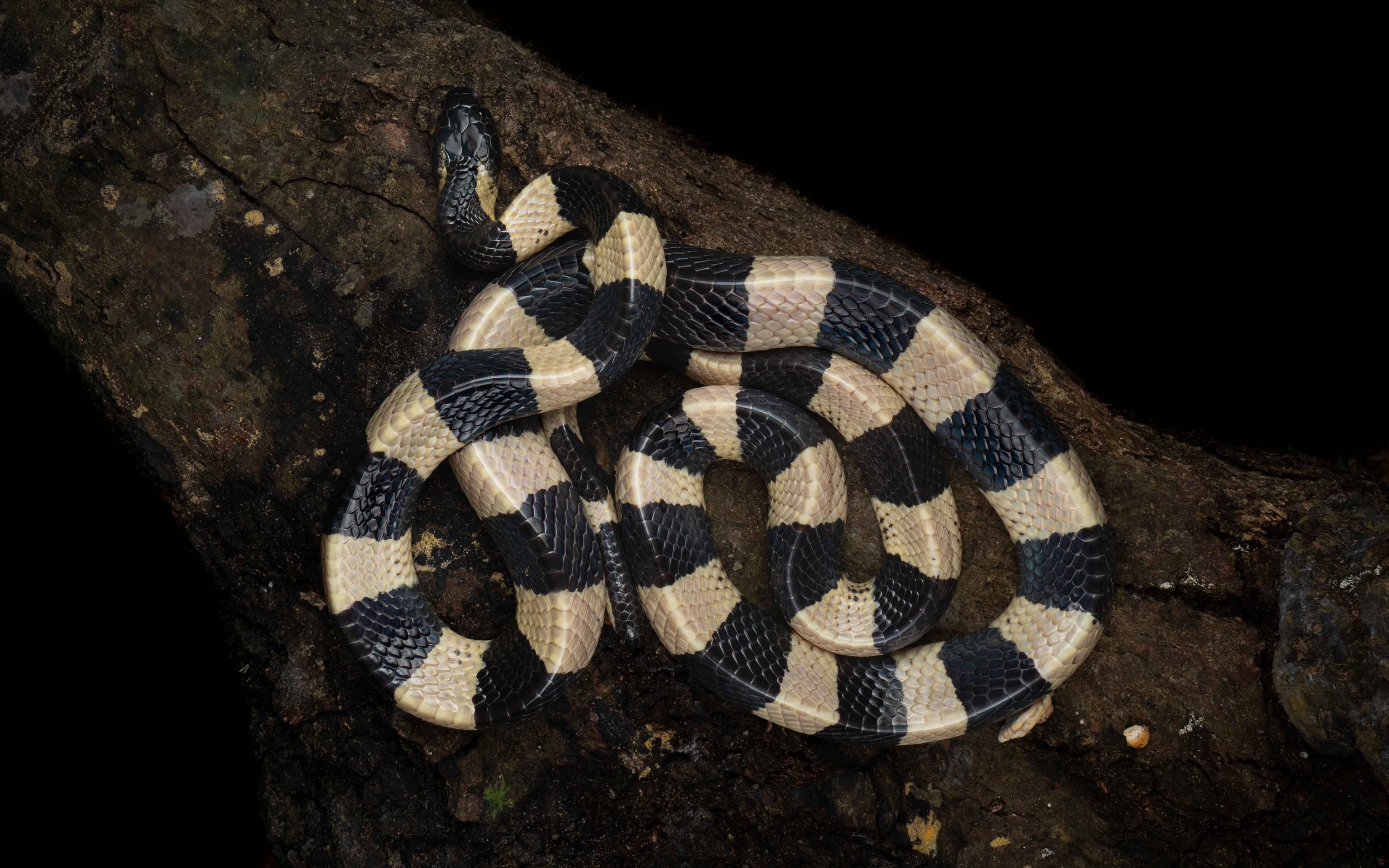
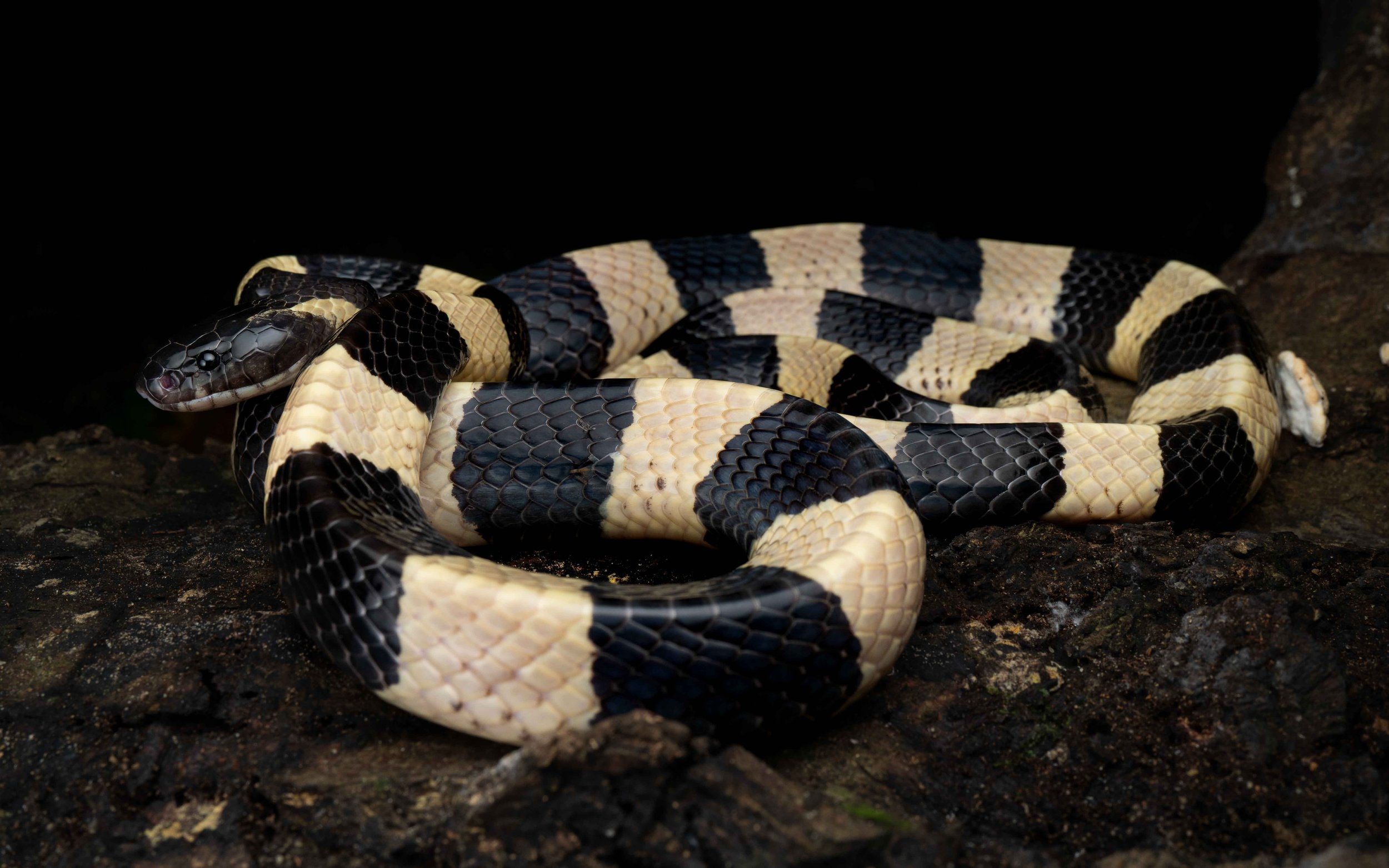
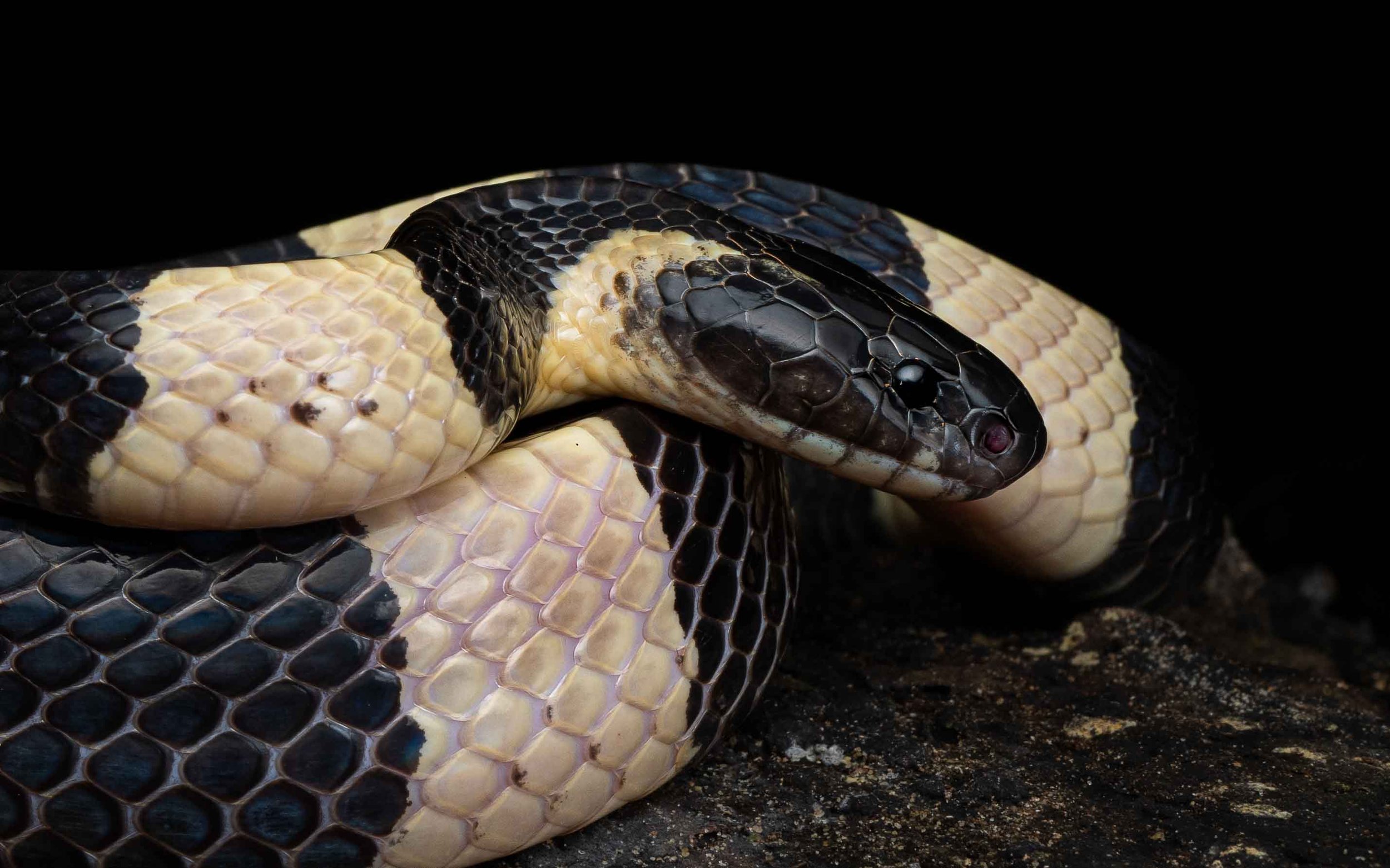
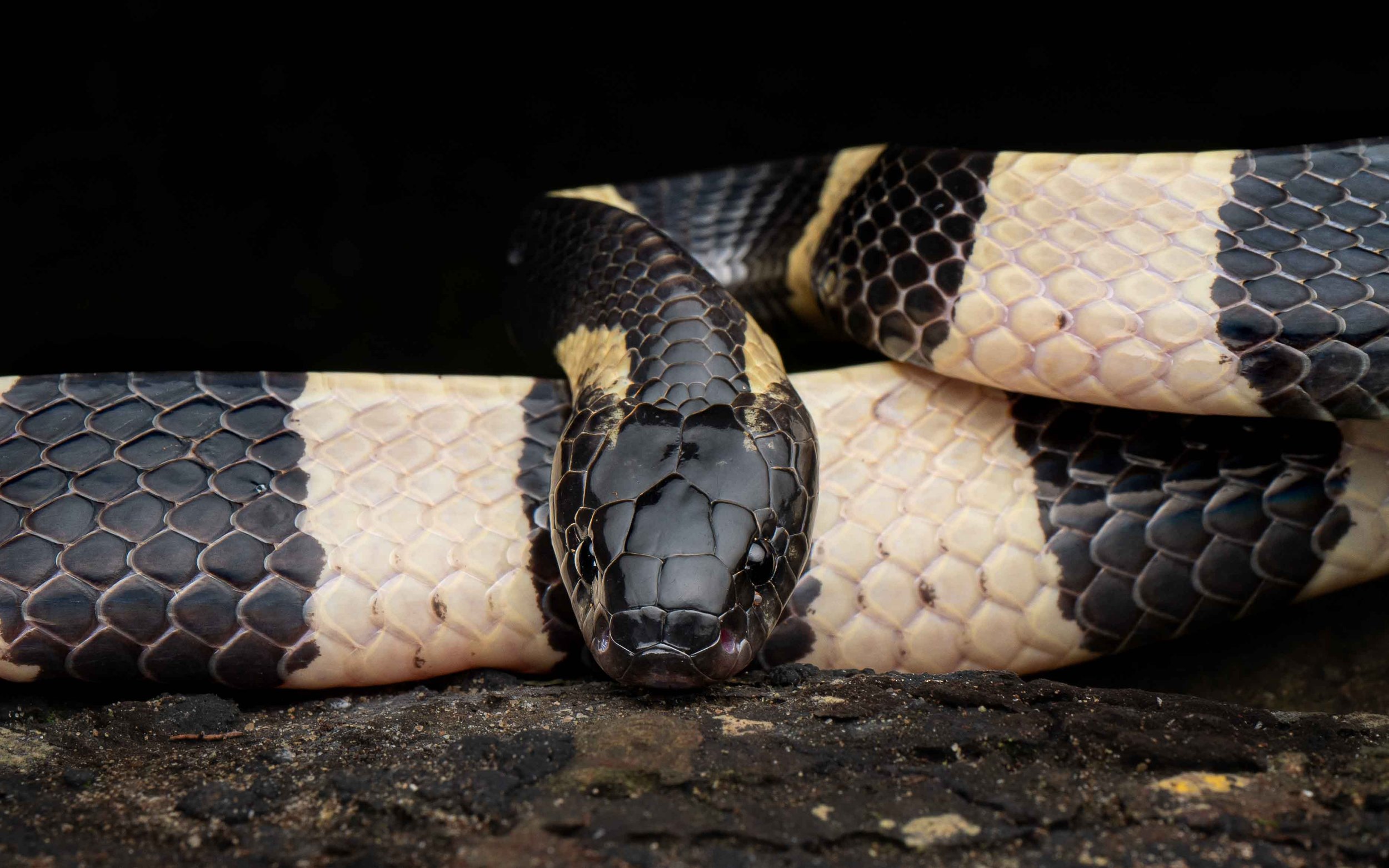
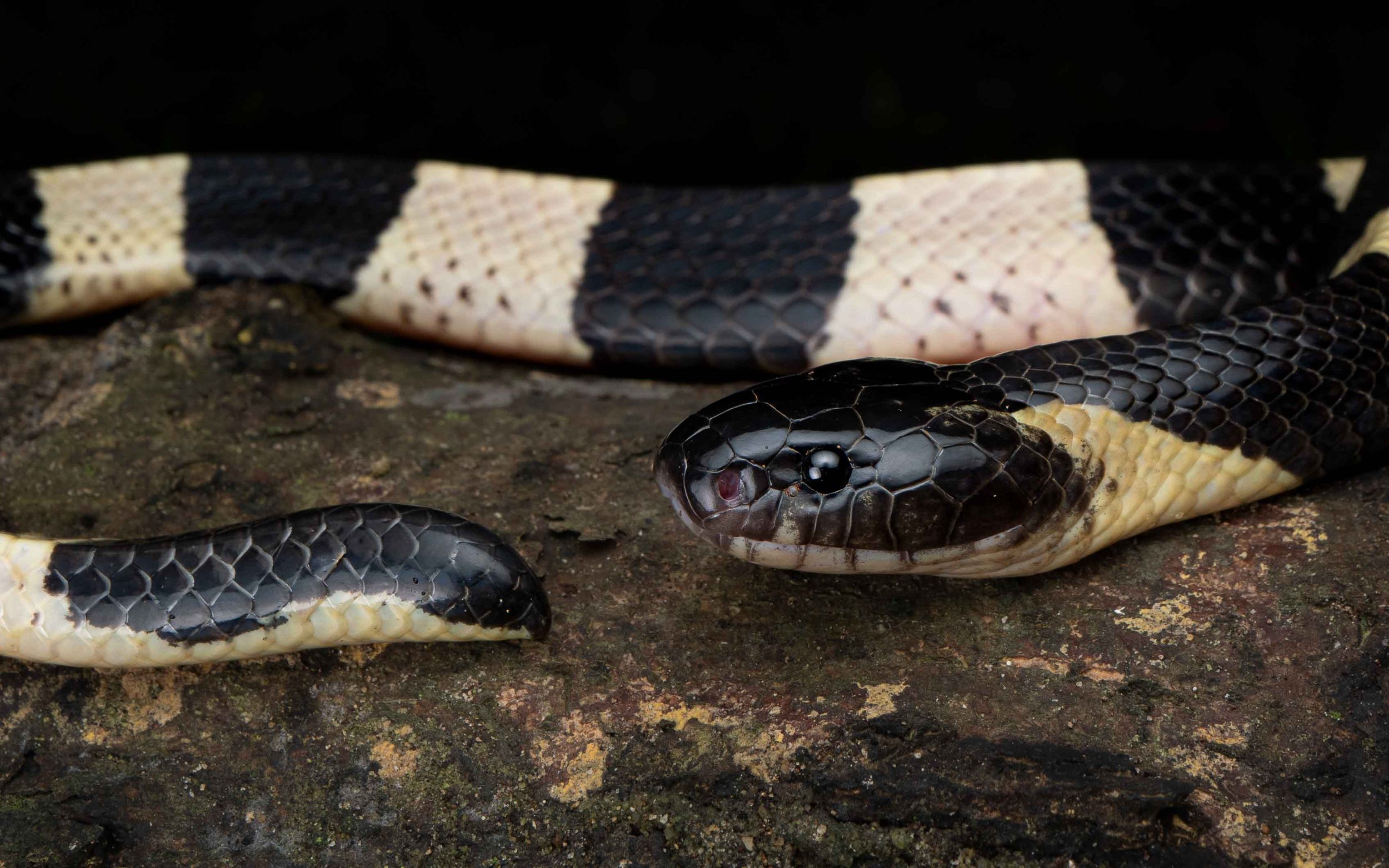

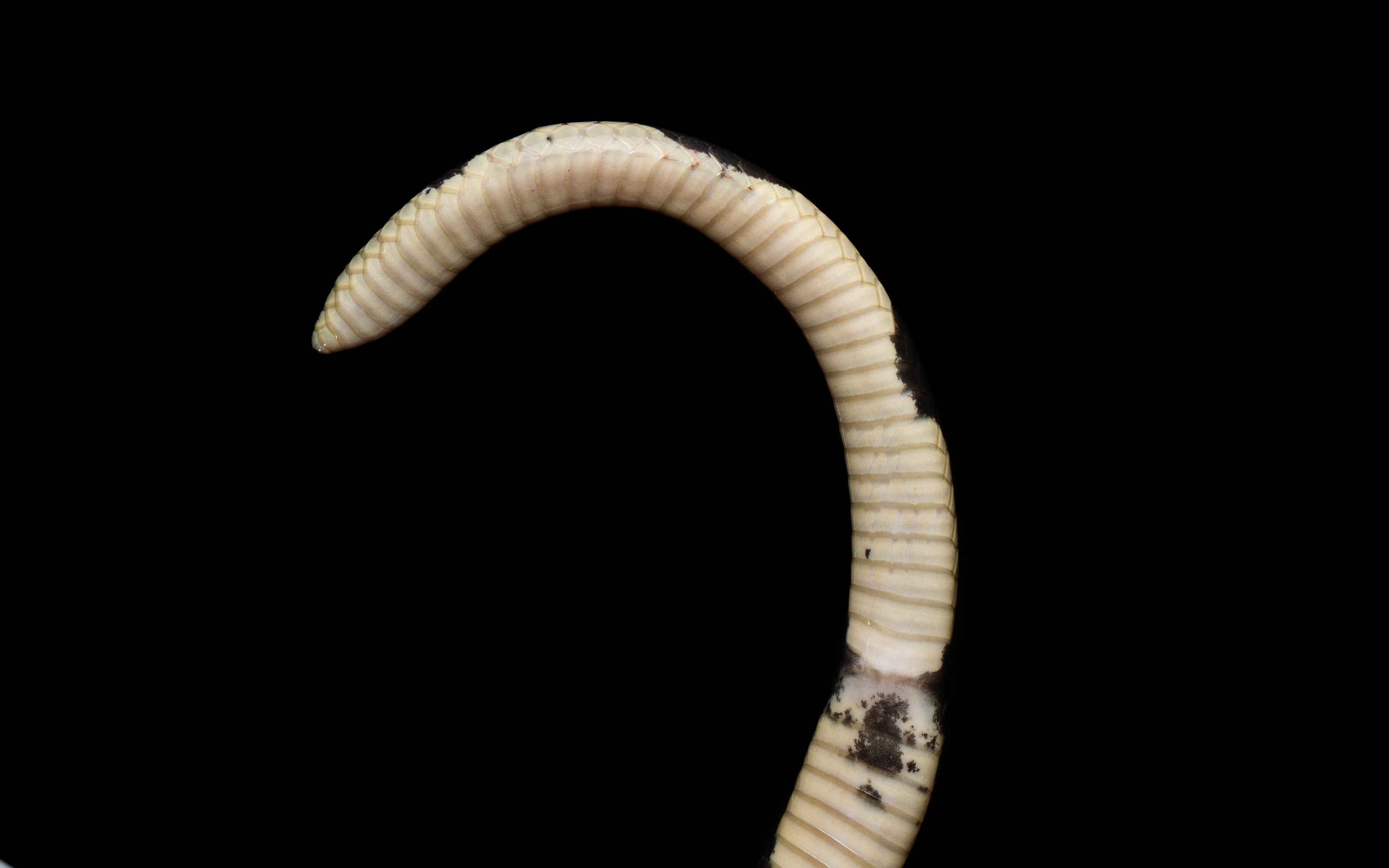
DESCRIPTION
High contrast cream and black or sometimes white/yellow and black banding evenly spaced running the length of the body. Head is rounded with dark yellow stripes running from snout to the back of the jaw. The Banded Krait has a very distinct keeled shape to its body which makes it look triangular. A medium to large sized snake they can grow up to 2m. Unique tail rounded off into a nub at the end and can appear like a small head.
BEHAVIOR
Active at night and mainly hunts other snakes. Generally docile when approached they are not quick to bite but will do so if disturbed or handled especially during their active period at night. Normally slow and deliberate in their movement but they are capable of moving quickly when fleeing. Attack behavior is erratic with wild head movements and lunging. Will bite from any direction and does not normally display characteristic ‘S’ shape before striking. Will normally hide its head under its body and leave its tail exposed where the round end appears like a small head. Predators will bite the tail leaving them exposed to a bite from the concealed head. Very capable burrower adept at quickly wedging itself into holes and crevices. Despite the toxic venom this species is normally quite docile and not usually bothered if observed from a safe distance. Hunts near water sources and will eat lizards as well as other snakes. Highly venomous and any bite should be treated as life threatening.
HABITAT
The Banded Krait is a terrestrial species often hunting in areas near water, including culverts, streams and either fresh water or brackish mangrove areas. A less common encounter for most given its nocturnal nature, it is possible though very unlikely to bump into one on the trail and if so they should be give a wide berth and left alone.
MISTAKEN IDENTITY
NO SNAKE SHOULD EVER BE HANDLED BY ANYONE BUT EXPERTS: The banded krait is relatively unique in appearance and not easily confused with other species.

